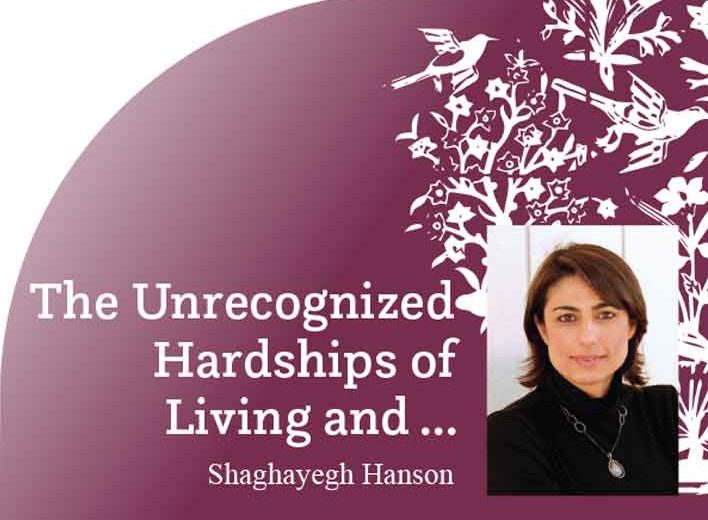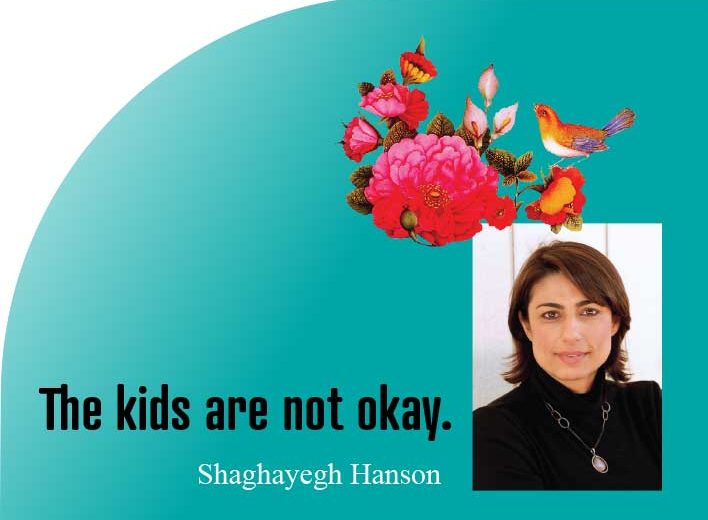DO NOT FOLLOW THE YELLOW BRICK ROAD
Shaghayegh Hanson
Approximately 14 months ago, we took refuge in our houses from the tornado of a pandemic raging outside. We bore the twists and turns, the pulls and tugs of the storm, and now we have landed. It’s time to open the door, peek outside, and see if the wicked witch is dead. And even if she is, how do we find our way back home? That’s where the fairy tale* analogy ends, because there are no good witches with magical wands, all-knowing wizards, or a yellow brick road to guide us. Besides, do we really want to go back to our lives as we knew them?
For some, especially those who have lost loved ones to COVID-19 or have lost a business, there is no choice in the matter, their circumstances have changed forever. For many of us, the pandemic has imparted some enlightening and useful lessons about changes we should implement in our lives and our institutions going forward. As other commentators have observed, we should press the reset—not the return—button.
For example, working remotely from home is now something both businesses and employees have found to be effective, and even preferable in some cases. For working parents, particularly mothers, who need the flexibility of working around school drop offs and pick-ups, baby nap times, and doctors’ appointments, this is good news. On the other hand, we have also learned that human contact is necessary for our well-being, no matter how introverted we are. Even the slightest rituals of saying hello to the barista at the coffee shop or exchanging a few words at the water cooler make us feel more connected to our communities, and less lonely. After all, humans are—by nature—social creatures. Striking a balance between being chained to our desks at the office and, at the same time, not feeling imprisoned in our homes, will be different for everyone, but employers should be more adaptable to flexible schedules going forward.
We also have a new appreciation for service industry workers who cannot work remotely. These “essential” workers compromised their own safety and that of their families, which ensured that the rest of us continued to meet our basic survival needs. My hope is the importance of their roles will lead to higher wages and benefits. The same is true of those who work in the healthcare industry, not just doctors and nurses but also nursing assistants, phlebotomists, home health aides, housekeepers, medical assistants, cooks, and the list goes on. These frontline heroes displayed dedication, skill, and courage in the face of enormous stress; their jobs are hard at the best of times, but they are often underpaid and undervalued. According to the Brookings Institute, there are approximately 7 million people in low-paid health jobs, earning a median wage of $13.48, far below what is considered a living wage.
Crucially, we have learned that instead of stigmatizing mental health issues, we need to address them as seriously and routinely as physical health issues. According to the Pew Research Center, one in five adults in the U.S. is experiencing high levels of psychological distress, including depression and anxiety. Not surprisingly, physical health concerns, financial distress, and loneliness have been major contributing factors. Most distressing, however, has been the effect on our children. Recently, Children’s Hospital Colorado declared a state of emergency regarding the number of patients arriving in emergency rooms exhibiting acute behavioral problems. Suicide is currently the leading cause of death in children over the age of 10 in Colorado. I recently spoke to a pediatrician friend in San Diego who confirmed there is a second pandemic of psychological issues among teens that is prompting practitioners to undergo specialized training to obtain certification in diagnosing and treating patients in this area.
The entire country—and the world—is beginning to understand that mental health issues do not exist in some netherworld where “crazy” people live, but are in fact prevalent in our day-to-day lives, and must be given as much priority as physical health. Even insurance companies and employers are finally turning a corner in their attitudes towards coverage for therapy and more favorable work environments.
While we are not out of the woods yet, the road ahead looks promising, as long as it is not the yellow brick road to how things used to be, but to how things should change for the better.
*The Wizard of Oz
Resources:
https://www.pbs.org/video/state-of-emergency-1622668997/
https://www.pewresearch.org/fact-tank/2021/03/16/many-americans-continue-to-experience-mental-health-difficulties-as-pandemic-enters-second-year/
https://www.yalemedicine.org/news/8-lessons-covid-19-pandemic
https://www.brookings.edu/research/essential-but-undervalued-millions-of-health-care-workers-arent-getting-the-pay-or-respect-they-deserve-in-the-covid-19-pandemic/


















